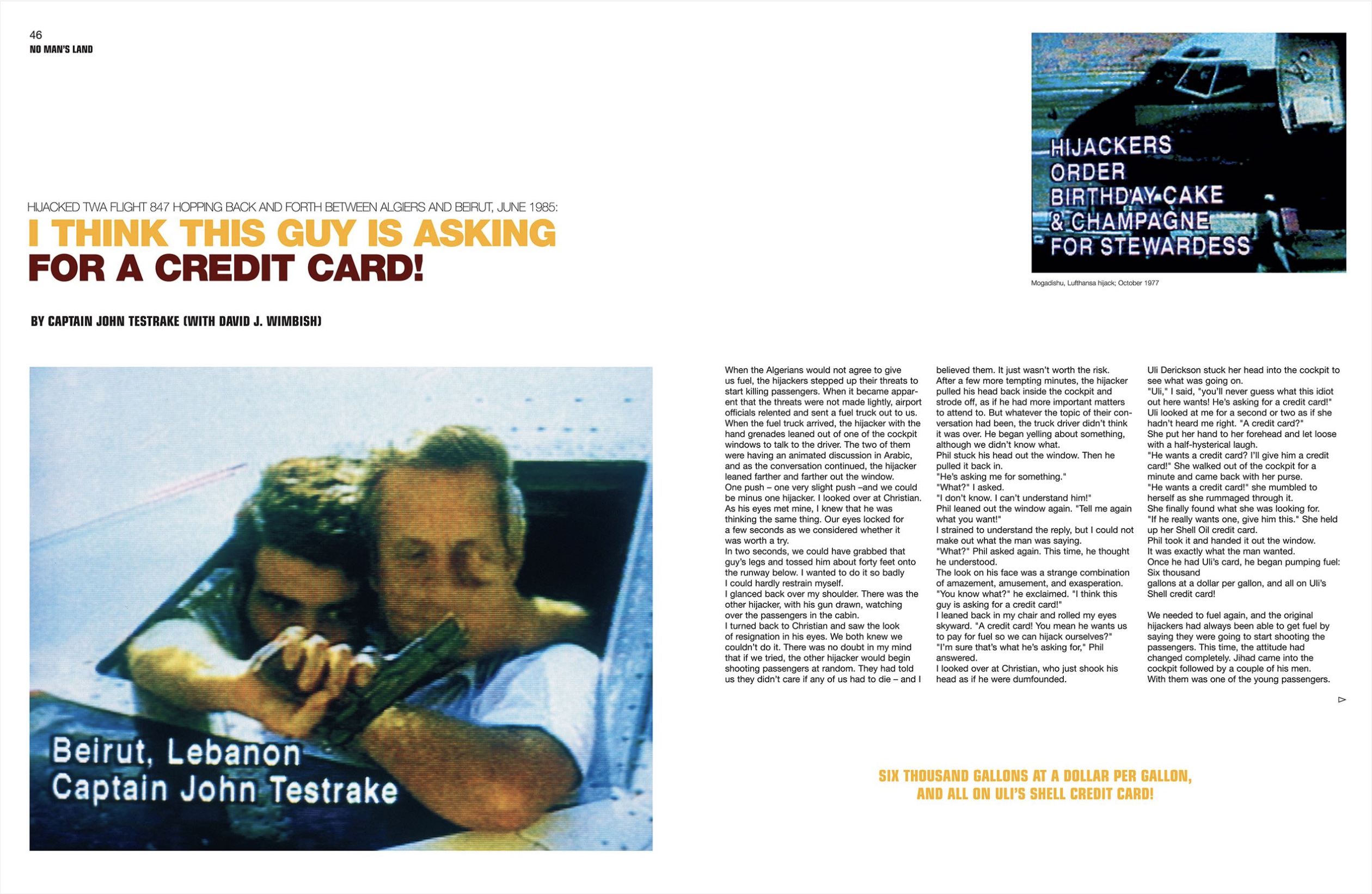
In 1997, four years before 9/11, Johan Grimonprez made an international breakthrough with Dial H-I-S-T-O-R-Y, an intriguing documentary on terrorism, fear inducing media spectacle, and plane hijackings with a soundtrack by David Shea. Playing on Don DeLillo’s riff in the novel Mao II (1991): “what terrorists gain, novelists lose” and “home is a failed idea”, he blends archive hijackings and news footage with surreal and banal themes including fast food, pet statistics, disco and quirky home movies. Quotes from Don DeLillo's novel serve as an anchor for this film.
EN
“Novelists and terrorists play a zero-sum game. What terrorists gain, novelists lose. Years ago I used to think it was possible for a novelist to alter the inner life of the culture. Now bomb-makers and gunmen have taken that territory. They make raids on human consciousness. What writers used to do before we were all incorporated.”
Don DeLillo1
“When Grimonprez assembles a chronology of hijacks on the basis of television images in dial H-I-S-T-O-R-Y, we see that they show us almost nothing at all, or rather, what we see are the gaps and spaces that the television image has to mask because of its immediacy, because it has been broadcast simultaneously with the occurrence of the event, so that it can be perceived as an image. In this sense, the television Image corresponds exactly to the definition of the visual as given by Serge Daney. The television image, he maintains, is an image that lacks reference to the other and in which this lack is no longer noticed.
"An image is what I call something that is still based upon a visual experience, and visual is what I call optical confirmation of the procedure of powers (of a technological, political, military or commercial nature) that, as a commentary, aims merely to elicit a sense of "Got it!"." The history of skyjacks in television images is a visual and thus blind history, which is why to Grimonprez it can become a history of this blindness.
[...]
Between an unreadable history and a superabundance of available history, dial H-T-S-T-O-R-Y seeks to arrive at statements that do not, in turn, lay claim to the static essence of a viewpoint, but rather make history describable as a fleld of virtual (re)connections. dial H-I-S-T-O-R-Y operationalizes the co-presence of several different points-of-view, thereby crossing the borders of any fictional narrative. As Elena Esposito noted, the term 'virtual' comes from the field of optics and refers to the reflections of Images in a mirror. 'The mirror does not "represent" [in contrast to fiction] an alternative reality for the observer (which can be attributed to a different observer); It "presents" the real reality from a different point-of-view, thereby expanding the observer's field of observation.' The reflection refers not to the differentiation between reality and fiction but to the conditions under which the observation takes place: Because the virtual history suggested by dial H-I-S-T-O-R-Y comprehends television images as reflections of social progress which we are as yet unable to describe, it does not reflect them as fictional reality but as the reality of fiction.”
Vrääth Öhner2
- 1Don DeLillo, Mao II (New York: Viking, 1991). Posted on johangrimonprez.be.
- 2Vrääth Öhner, "On Seeing, Flying and Dreaming" in Dial H-I-S-T-O-R-Y / a Holiday From History (Brussel: Argos, 2003), 6-7.


